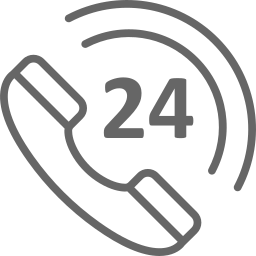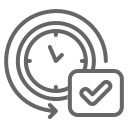In this course, we have learned about the different system of IS and IT. We also learned about the AGILE Methodology. Here, the task is to describe each week learning in form of essay. Different concepts were studied and understand. Learned about the flow diagrams and process modeling and tools used in the IT.
Week 1
In Week 1, I learned about systems analysis and design and the role of a systems analyst. I understand the Internet business strategies and relationships, including B2C and B2B. I have studied that IT is combination of software, hardware and services. I further learned about different components of information system which is Data consist of Basic facts and Information is Data, transformed into output that is valuable to the users. It further includes hardware software people and processing of data. I learned about the Internet Model. This includes; Ecommerce (electronic commerce), User interface that enables communication between a data-base management software and a web-based server. I learned how to develop a business operation models. In this, I have got an idea related to Specific set of transactions, events, and results that can be described and documented;
Week 2
In week 2, I learned about integrated development environment (IDE) and application life cycle management (ALM) solutions. I further go through the examples of CASE tool features. CASE tools reduce costs, speed up development, and provide comprehensive documentation for future maintenance or enhancements. I further understand how to select the case tool and it is based on type of project, size and scope of the project, possible budgetary and time constraints, preferences and experience of the system development team. The tools help design and construct information systems
Week 3
In week 3, I learned about the business case, requirements comprises the objectives and it needs for the system to be advanced and efficient through preliminary investigation through findings can be submitted. For improving it systems conditionally and systematically a framework is basically designed for implementing a strategic plan by examining of goals, strategies, opportunities, abilities and resources of concerned organization. The framework is designed for the assurance of well-defined projects, statements, assumptions, factors, inputs and outputs with planning tools. System review and resource committees are organized for processing the streamline consistency, instructions, understanding, supporting and submitting priorities of documents. Analysis and research on organizations and their organizational charts through performing interview, manipulating their abilities by taking a review of documentation through observing operations is done through the process of feasibility acquiring economic feasibility which acquires the costs and share prices of it projects comprising it staff, users, hardware and software requirements, licenses, fees and facility costs. For implementing organization culture, a well-defined system is organized for solving legal and ethical issues processed by operational feasibility. Rather than economical and operational feasibilities, comprising tangible and intangible costs benefits and costs are measured in dollars and lessen the expenses by increasing the revenues. Setting priorities organized and processed discretionary and non-discretionary projects to be evolved in a proposed system which identifies the projects implementation and selected projects of own choice which provides predictable annual updates to payroll, tax percentage and quarterly changes. Project explanations, responsibilities f users, it staff and management is handled by organized preliminary investigation.
Week 4
In week 4, I studied system analysis and design book by Rosenblatt, H. J. (2016), Mastering the Requirements Process: Getting Requirements Right, 3rd Edition, Addison Wesley, Upper Saddle River, NJ. I learned about the system’s logical model this week. The system analysis contained modeling requirements, process modeling, data modeling, development strategies should be considered. Our main objective is to clearly understand the project and assured that it will be according to the business requirements. Another purpose is to develop a solid foundation for the design of the system. In this week, I learned how to use a functional decomposition diagram to model the business process and functions. The popular team-based techniques include Rapid Application Development (RAD), Joint Application Development (JAD), and agile methods. The process of fact findings involves interviewing, document review, observation, questionnaires, sampling, and research. The system analyst has to carefully store the collected factual information and other software tools that help the analyst for visualization and to describe the information related to the system. I learned about effective documentation method to utilize it during system development and also explained the scalability concept. I clearly define the total cost of ownership and successfully conduct an interview. I also graphically represented the system data and processes. The modeling tools and techniques, we discussed are business process modeling, data flow diagram, sequence diagram, and use case diagram. The development strategies of the system analysis are outsourcing, development alternatives, and software trends. I concluded that a clear understanding of system requirements and business processes is necessary for the system developers.
Week 5
Data and Process Modeling
In this week, I studied Rosenblatt, H. J. (2016), Systems Analysis and Design, Robertson, S. and Robertson, J. (2013), Mastering the Requirements Process: Getting Requirements Right, by Wesley, and IIBA (2015), Guide to the Business Analysis Body of Knowledge. The main objective is to explain the data and process modeling concept and tools such as data flow diagram, process description, and data dictionary. The symbol and its rule utilized in the data flow diagram are also described such as data flow symbol (spontaneous generation, black holes, and gray holes), process symbol, and DFD symbols (Yourdon, Gane, and Sarson). I learned how to balance a data flow diagram sets and how to utilize a data dictionary. The process description tools such as decision trees, decision tables, and structured English are utilized. A graphical model is developed by a system analyst during the data and process modeling to transform system data into useful information. The end product is a logical model to support business operations and fulfill user requirements. The data and process modeling contained three tools which are data dictionary, process description, and data flow diagrams. The data transformation in the system is graphically shown with the help of a data flow diagram using four symbols. The structure of the DFDs set is like a pyramid. The context diagram at the top of the pyramid. For structured analysis, the central documentation tool is the data dictionary. I learned how to use structured analysis tools to create a logical model during the system analysis. The physical model is developed during the system design.
Week 6
Object Modeling
This chapter involves the description of object-oriented analysis, object modeling concepts, and terms such as objects, attributes, methods, messages, classes, and instances. The relationship between the inheritance concept and the objects is also considered. The object relationship diagram is also created and tools and techniques of unified modeling language are described such as use cases, use case diagrams, class diagrams, sequence diagrams, state transition diagrams, and activity diagrams. I learned about benefits with the help of CASE tools to develop the object model and how to organize it. This week, I have learned how to organize the object model and made sure that object definitions and each diagram supported relevant information and are linked to the suitable appropriate class, state transition, sequence, and activity diagrams. The accuracy should be maintained during object modeling. The most popular technique is object modeling that clarifies the system (objects). The object-oriented terms contained classes, attributes, instances, messages, and methods. The user sends a command or message and another object is required to carry out certain tasks and methods. I used the Unified Modeling Language (UML) method for documenting and visualizing the information system. I learned about the business situation with the help of a use case initiated by an actor and interacted with the data system. The last part of the object modeling process is to organize the use diagrams and use cases which resulted in the creation of the class, sequence, state transition, and activity diagrams.
Week 8
Development Strategies
This week is related to the development strategies which clearly describes the concept of software in term of service. I clearly defined cloud computing and web 2.0 and explained the software acquisition alternatives such as web-based development strategies and traditional based software development strategies. I also explained the software outsourcing options such as service provider’s roles and offshore outsourcing. The pros and cons of in-house software development are also described in detail and discussed the financial analysis tools and cost-benefit tools. I differentiated the request for quotation and request for proposal. The system requirement document also describes in detail and explained transition work with the help of system analysis to design the system. For software acquisition, organizations have to choose Application service providers, Web-hosted software options, and Firms that offer enterprise-wide software solutions. The most important decision is to select the best development path. I have learned financial analysis tools such as payback analysis, net present value, and return on investment. The role of the system analyst to develop the system process is highly dependent on the specific development strategy and the important factor while choosing the development strategy is TCO (total cost of ownership). The traditional system must involve the function in different hardware and software environments and have to be compatible with the system legacy. The requirement of the document is the system analysis phase, end product, and deliverable.
Week 9
In week 9, I learned about the user interface. In this scenario, for giving problem solving access to the user, the enlargement of resources, advancement for computer design and user experience is processed by HCI to enhance focus on the product designs, user interfaces and improving interrelations between specific users experiences of various organizations and systems for limiting the technological activities to make it easier for the humans in a multi-disciplined manner. User centered design is enforced to produce a variety of quality based and highly utilized designs by prompt estimated users. In the scenario, user experience and high quality efficiency is enforced in output and input designs and informing about features and difficulties faced by users and work on processing user experience needs. Foe the providence of system statistics and analytics to be visible to the defined user for the communication between user system and the real world to prevent errors and several other disorders to facilitate user with reliability to get tasks done quickly. User interface design is enhanced on the basis of hardware concerns and technological input and output issues of data generations while the data sent and received by different users from different network mediums.an approach is associated with modular design to divide data into smaller pieces and gives designers an access to read difficult modularized code and establishing paper prototypes and HTML prototypes for investors to represent a standardized 3d design and 3d print of the latest version. For intercepting security errors and bugs and many other software security risks, security input and output technology routers are functioned with MFPS.
In week 10, I learned about the data design. This architecture involves a central server and different systems used for data processing. The client and server relationship helps to specify the processing among them. Two and three tiers design approach could be used that overall depends on user interface. A middleware is used to communicate among the tiers. I have learned further about the A web server is used to provide a user interface. It is in the form of HTML document. Internet impact greatly reduces the complexity and cost. An online data storage cloud enables to remotely access the data from internet. This architecture allows a complete control and flexibility that helps to change or manage site. This helps to understand that how data is moved from one application to another via a networked computer. Certain network topologies including ring, star and mesh networks are being used
Week 10
The design of database involves the data organization. This can be done according to the database model. Data storage, management and organization is done via a data structure platform. This consists of a database management system that is used to enable the user to store, analyze, access the data. This allows the system to expand or modify according to the requirements and also the better hardware utilization. It includes an administrator to maintain the database known as database administrator. It also involves certain standards that are being used by the whole organization. The design of database involves different relationships to classify the data. The system architecture and data design is described in the next section. A conceptual model of architecture named as system architecture helps to define system’s behavior and structure. It represents a formal system representation. This consists of various system sub components that are developed and implemented in such a way to work together in overall system. It heavily depends on various techniques and practices. Many were developed thousands of years ago. Before the digital computers came into existence, many engineering disciplines used this term for different purposes. The development of software engineering and digital computers evolves the system architecture and data design. System architecture involves both system hardware and software. All these are discussed in next sections.
In this week, I learned about the data structures provide a platform to store, manage and organize data. This consists of different tables and files that are used in interaction among different systems in different ways. The data processing uses another concept of file processing that is used by certain companies to knob large amount of data. This consists of a database management system that is used to enable the user to store, analyze, access the data. This allows the system to expand or modify according to the requirements and also the better hardware utilization. It includes an administrator to maintain the database known as database administrator. It also involves certain standards that are being used by the whole organization. This database management system provides a better access for different users to have different data access. In this way, better level of security is provided. Those systems that have an interaction with this system are independent about data maintains procedure. This includes the administrative, users and the related systems including the system that controls the operation for database etc. I have learned about the website design, In this design, the database are managed and created by the use of some commands but it has nothing to do with the HTML. In this design approach, the data must be secure by all aspects and it must be accessible to only allowed users.
Certain design terms must be taken into account while designing the data design. This includes table, file, tuple, entity, some primary keys including candidate, foreign, primary and secondary keys. Entity can have one-to-one, one-to-many or many-to-many relationships.
I also learned about the data normalization. In this process, tables of certain fields are created in each database. The stages involve in this process includes un-normalized, first, second and third normal form.
Week 11
In week 11, I have learnt about the system architecture. I learned that choice of system architecture faces certain issues that must be taken into account. These include:
Business information system helps to manage all the applications that are involved in performing the logical processing. It is being used to handle all types of data that is being stored or access. This system is used to provide an interface that helps the users to take interaction with the system architecture. During the planning of design; all pros and cones of each topology must be taken into account. The main architecture of the system consists of a server that is used for the data processing. In early times, centralized mainframe computers are their but the advancement in technology the installation can be done at any remote location. The evolution of network occurs from LAN to WAN networks.
A database management system is very flexible and powerful as compared any traditional oriented system. This allows the users to update, analyze or manage any type of data in database. The information is correctly maintained in each database. The design problems are avoided by normalization process.
Rosenblatt, H. J. (2016), Systems Analysis and Design.11th Edition, Cengage Learning, Boston MA
Robertson, S. and Robertson, J. (2013), Mastering the Requirements Process: Getting Requirements Right, 3rd Edition, Addison Wesley, Upper Saddle River, NJ
IIBA (2015), Guide to the Business Analysis Body of Knowledge, BABOK Version 3.0, International Institute of Business Analysis, http://www.iiba.org/BABOKGuide.aspx
Remember, at the center of any academic work, lies clarity and evidence. Should you need further assistance, do look up to our Computer Science Assignment Help
You Might Also Like
Six Reasons Why You Should Study Business
Cracking Business Management Problems with Expert

Get 24x7 instant assistance whenever you need.

Get affordable prices for your every assignment.

Assure you to deliver the assignment before the deadline

Get Plagiarism and AI content free Assignment

Get direct communication with experts immediately.
Secure Your Assignments
Just $10
Pay the rest on delivery*

It's Time To Find The Right Expert to Prepare Your Assignment!
Do not let assignment submission deadlines stress you out. Explore our professional assignment writing services with competitive rates today!
Secure Your Assignment!